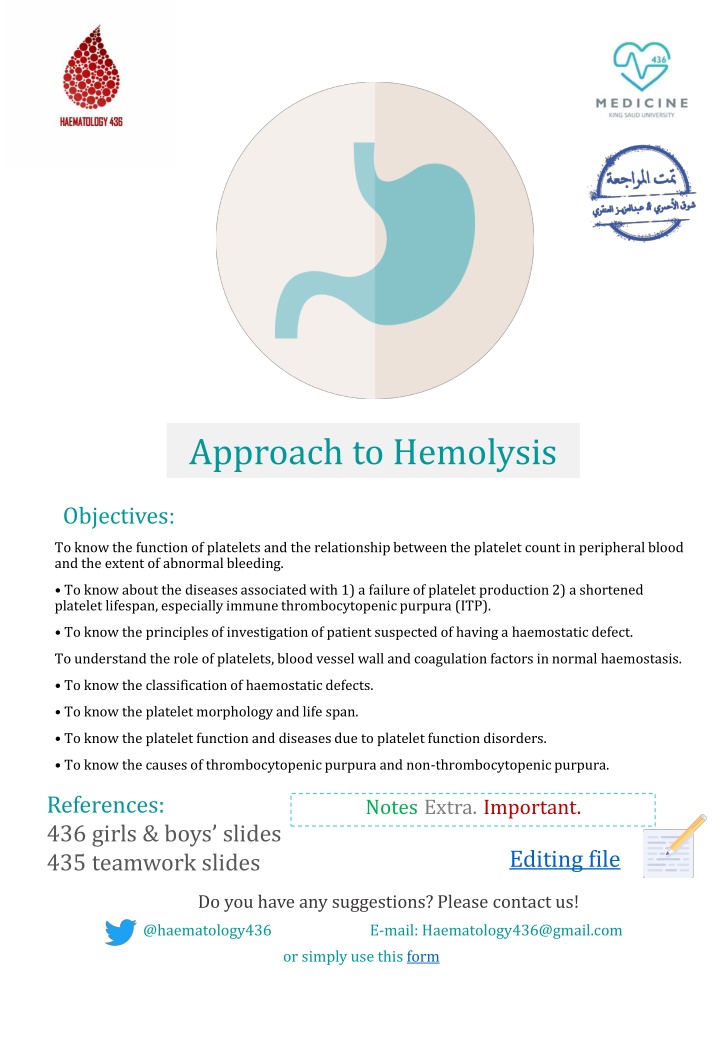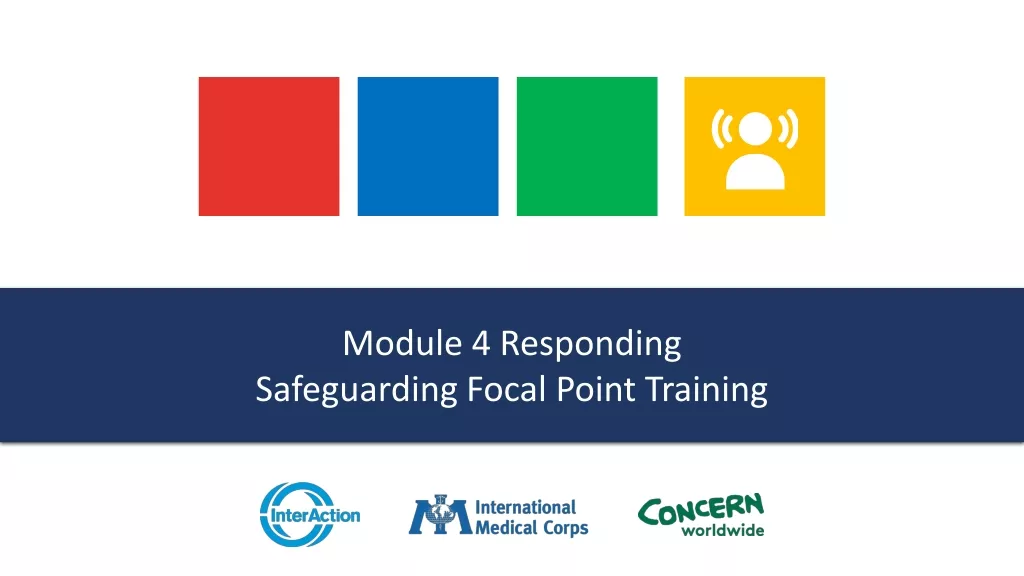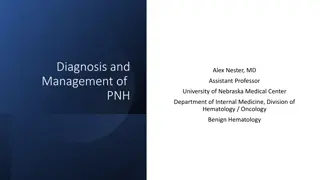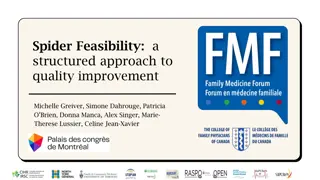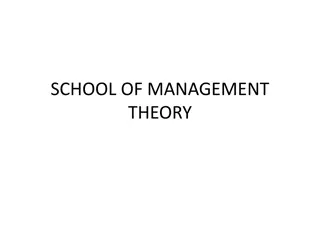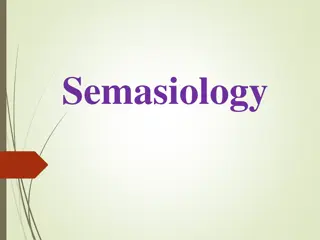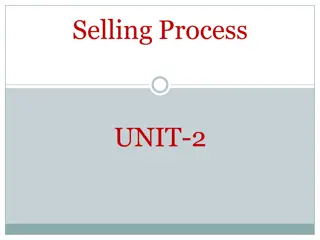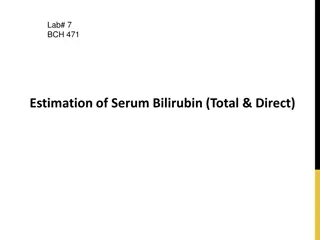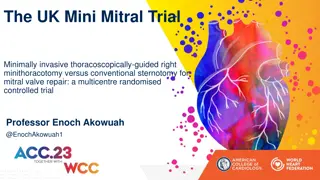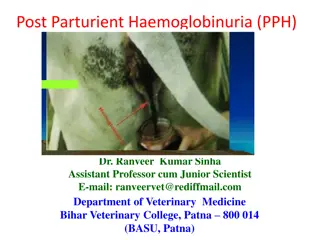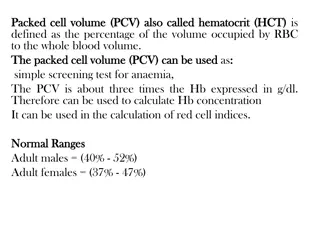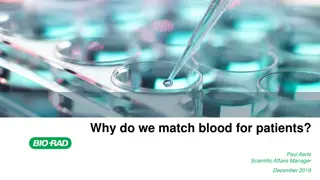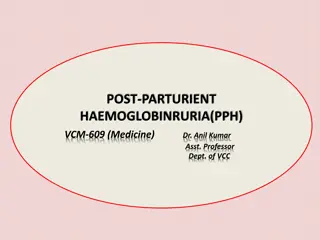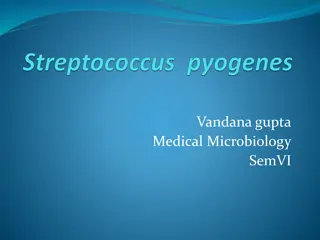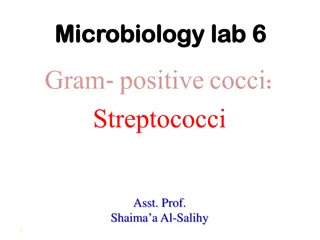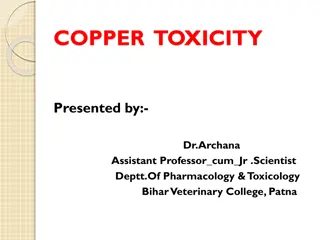Approach to Hemolysis
Function of platelets, platelet count in peripheral blood, abnormal bleeding, diseases associated with platelet disorders, investigation principles for hemostatic defects, role of platelets in hemostasis, hemolytic anemias, clinical features and laboratory features of hemolysis.
Download Presentation

Please find below an Image/Link to download the presentation.
The content on the website is provided AS IS for your information and personal use only. It may not be sold, licensed, or shared on other websites without obtaining consent from the author.If you encounter any issues during the download, it is possible that the publisher has removed the file from their server.
You are allowed to download the files provided on this website for personal or commercial use, subject to the condition that they are used lawfully. All files are the property of their respective owners.
The content on the website is provided AS IS for your information and personal use only. It may not be sold, licensed, or shared on other websites without obtaining consent from the author.
E N D
Presentation Transcript
Approach to Hemolysis Objectives: To know the function of platelets and the relationship between the platelet count in peripheral blood and the extent of abnormal bleeding. To know about the diseases associated with 1) a failure of platelet production 2) a shortened platelet lifespan, especially immune thrombocytopenic purpura (ITP). To know the principles of investigation of patient suspected of having a haemostatic defect. To understand the role of platelets, blood vessel wall and coagulation factors in normal haemostasis. To know the classification of haemostatic defects. To know the platelet morphology and life span. To know the platelet function and diseases due to platelet function disorders. To know the causes of thrombocytopenic purpura and non-thrombocytopenic purpura. References: 436 girls & boys slides 435 teamwork slides Notes Extra. Important. Editing file Do you have any suggestions? Please contact us! @haematology436 E-mail: Haematology436@gmail.com or simply use this form
HEMATOLOGY TEAM 436 Haemolysis: It is a Premature destruction of RBCs. Hemolysis is due to: Defect in the RBCs (intra-corpuscular) as in congenital hemolytic Anaemia. Defect in the surrounding environment (extracorpuscular) as in acquired Anaemia Haemolytic Anaemias: Haemolysis is the shortening of the lifespan of a mature red blood cell. haemolysis will result in anaemia more readily increased red cell output from the bone marrow stimulated by erythropoietin This mechanism compensates the loss of RBCs, and this requires an adequately function bone marrow and effective erythropoiesis More marked reductions in red blood cell life span 5-10 days from the usual 120 days will result in haemolytic anaemia a suboptimal marrow response is seen Clinical Features of Hemolysis: Pallor, lethargy Jaundice Splenomegaly Gall stones (Pigment bilirubin) Dark urine (urobilinogen) Bone deformity (In some types of haemolytic anaemia) especially in congenital Leg ulcers (in some types of haemolytic anaemia). Especially in sickle cell Intravascular haemolysis: extravascular haemolysis: It is the process of breakdown of red cells directly in the circulation. It is the excessive removal of red cells by cells of RE system in the spleen and liver. main laboratory features of intravascular haemolysis: Haemoglobinaemia (free Hemoglobin in blood) and Haemoglobinuria. Haemosiderinuria (Iron storage protein in the spun deposit of urine). 2
HEMATOLOGY TEAM 436 RBC Lysis (Extravascular Vs. intravascular) Intravascular and extravascular haemolysis: Causes of intravascular haemolysis: Mismatched blood transfusion (usually ABO) G6PD deficiency with oxidant stress Red cell fragmentation syndromes Some autoimmune haemolytic anaemias Some drug-and infection-induced haemolytic anaemias Paroxysmal nocturnal haemoglobinuria March haemoglobinuria Unstable haemoglobin Important diagram Laboratory Features of Hemolysis: Features of increased red cell breakdown Features of increased red cells production. Damaged red cells. serum bilirubin is raised (unconjugated and bound to albumin). urine urobilinogen. Faecal stercobilinogen. lactate dehydrogenase (LDH). Reticulocytosis Morphology (e.g. microspherocytes, elliptocytes, red cells fragmentation). Bone marrow erythroid hyperplasia. Increased osmotic fragility, autohaemolysis..etc) Shortened red cell survival (This can be shown by 51Cr labeling with study of the sites of destruction. Absent serum haptoglobins. Haptoglobins= binds free hemoglobin fro erythrocyte with high affinity & therefore inhibits its oxidation activity. Haemolytic Anaemia Acquired Congenital SICKLE CELL DISEASE & OTHER HAEMOGLOBIN DISORDERS THALASSAEMIAS Enzymopathy ENZYMOPATHIES thlassemia MEMBRANOPATHIES 3 From outside From body
Sickle Cell Anemia HEMATOLOGY TEAM 436 Abnormal Haemoglobins (Haemoglobinopathies): Some Known Haemoglobin Mutants : (all in beta chain) Target cells + sickle shape Name Substitution Hb. S 2 2 - 6 GLU VAL Hb. C 2 2 - 6 GLU LYS DNA Coding for the Amino-Acid in the sixth position in the - chain Normal:- 5 Amino Acid pro glu DNA Base Composition CCT G A G G A G 6 7 glu Sickle:- DNA Base Composition Amino Acid 5 6 7 In position 6 it is supposed to be the amino acid glutamic acid but it transformed into Valine pro val CCT G T G G A G glu 1910: 1st published report of sickle cell anaemia (Herrick) 1949: Pauling et al : chemical difference between HbA and HbS 1956: Ingram: Fingerprinting glu val It is important to Know that the HbS is Due to abnormal Beta-Chain in Amino Acid number 6 wich transforms from glutamate to valine due to mutation! 4
HEMATOLOGY TEAM 436 Traits heredity: AA: Normal AS: trait carrier (could transmit the disease) SS: Diseased AC: Trait (carrier) AS: Trait (carrier) for another disease. CS: Diseased AS: Sicle cell trait AF-Thal: thalassemia trait SF-Thal: diseased 5
HEMATOLOGY TEAM 436 Sickle cell disease: 1. The sickle cell trait (AS) - 2. Homozygous sickle cell disease (ss) Sickle cell anemia sickle cell / hemoglobin C disease 3. Doubly heterozygous sickle cell disease (2 diseases together) sickle cell / thalassemia Properties of Hb S : 1. Solubility decrease 2. Conformational changes- tactoid formation when exposed to O2 3. Sickled cells 4. Irreversibly sickled cells 5. Increase mechanical fragility hemolysis 6. Increase viscosity organ infraction Factors affecting sickling 1. Oxygen tension: 2. pH : 50-60 mm Hg for SS 20-30 mm Hg for AS inhibited at alkaline pH (Alkalosis blood decrease sickling attacks) Exacerbated by acidification Concentration of Hb S Presence of other hemoglobins Polymerisation: S > D > C > J=A > F 3. 4. Sickling at low O2 tension Increased PH Low O2 tension Viscosity Slow blood flow 6
HEMATOLOGY TEAM 436 Factors Precipitating Crises In Sickle Cell Disease : Infections (Especially Malaria) Pyrexia fever Exposure To Cold Dehydration (the most important factor with pregnancy) Pregnancy Clinical manifestations of sickle cell disease: Haemolytic anemia Tissue infraction Crises in sickle cell disease: Hyperhaemolytic. Aregenerative or aplastic. Small vessel occlusion. Clinical Manifestations in Sickle Anaemia Pallor (Anaemia) Jaundice & Dark Urine Apathy & Anorexia Hand-Foot Syndrome (Young Children) ( one of earliest signs of sickle cells anemia) Splenic sequestration (Young children) Hepatic Sequestration Bones and Joints Pain very sever (the patient may scream from pain). Abdominal Pain Hand foot syndrome: swelling-pain- inflamed small bones 7
HEMATOLOGY TEAM 436 Clinical Manifestations in Sickle Anaemia Recurrent Infections & Chest Symptoms (Acute Chest Syndrome) Hepato-Splenomegaly but more significant with thalassemia (Early Childhood) (Association with Thalassaemias) CNS Presentations Leg Ulceration characteristic for sickle cell patients Skeletal Deformity Laboratory Diagnosis of Sickle Cell Disease: CBC Blood Film Sickle Solubility Test Hb Electrophoresis (Most accurate) Genetic Study We put the blood in a media Right: normal (translucent). Left: abnormal (turbid due to RBCs breakdown). Indications for exchange transfusion: Not important Strokes Pulmonary infarcts with infection Pregnancy (Severe persistent painful crisis) Priapism prolonged erection of the penis Preparation for major surgery Indications for Blood Transfusion in Sickle Cell Anaemia: Not important Splenic sequestration (Stuck RBCs- spleen enlargment-dysphanction) Hepatic sequestration Aplastic crisis Overwhelming infections Elective or emergency surgical operation Severe painful crisis associated with severe haemolysis Pregnancy 8
HEMATOLOGY TEAM 436 Summary: Hemolysis Clinical features Labratory findigs Causes Mechanisms Intravascular haemolysis: inside the circulation Features of increased RBCs breakdown Congenital: membrane defects, enzyme defects, globin defects. Pallor, lethargy Extravascular haemolysis: in the spleen and liver (RES organs) Features of increased RBCs production Jaundice Acquired: Immune , Non- immune. Splenomegaly Damaged RBCs Gall stones Dark urine Bone deformity Leg ulcers Sickle cell disease Substitution of amino acid number 6 in beta-chain Haemoglobin mutation (6 GLU > VAL) 9
HEMATOLOGY TEAM 436 MCQs: 1-A patient came to the ER complaining of dark urine. On examination, they found jaundice in his sclera, splenomegaly and haemoglobinuria. What is the most common cause of these manifestations? A-Extravascular haemolysis. B-Intravascular haemolysis. C-Both A&B. 2-What is the substitution mutation in Hb.S? A- 2 2 - 6 GLU > VAL B- 2 2 - 6 GLU > LYS C- 2 2 - 26 GLU > VAL 3-Haemolytic anemia is associated congenitally with which of the following: A-Sickle cell disease. B-Thalassemia. C-Both A&B. 4-In Which of the following we will find sickle cell disease & Alpha-Thalassemia in the patient at the same time? A-The sickle cell trait (AS) B-Homozygous sickle cell disease (ss) C-Doubly heterozygous sickle cell disease . 4-C 3-C 2-A 1-B ANSWERS: Good Luck! Team members Heba Alnasser Hanin Bashaikh Shrooq Alsomali Shahd Alsowaidan Fahad Al-Askar Team Leaders Safa Al-Osaimi Abdulaziz Al-Hussainy 10
